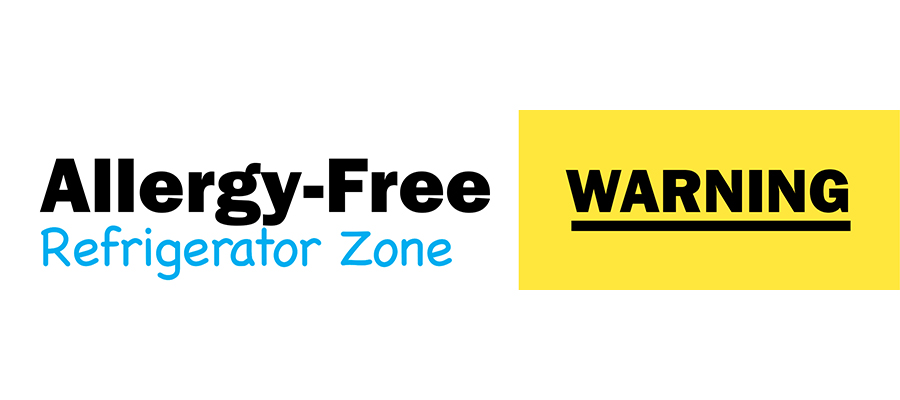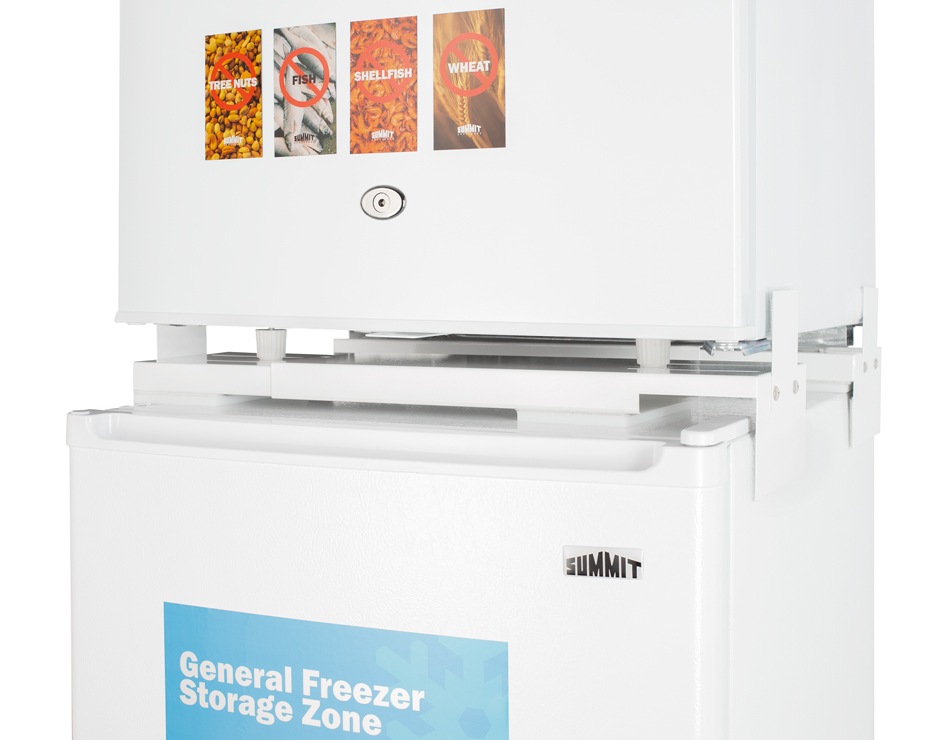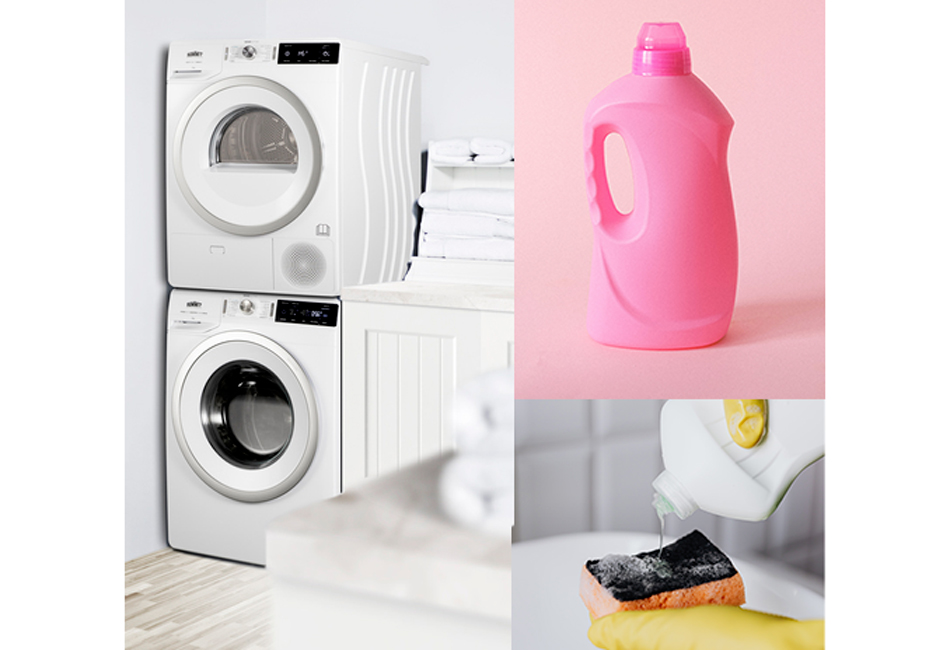It is estimated that over 50 million Americans experience allergies each year. For many, it can limit what they can or cannot eat, and for others it can mean a months-long battle with pollen and dubious adorable flowers. Regardless of the impact, there are simple things(tips & tricks) you can do at home to help limit your exposure to allergens to keep you and your family safe.
In the Kitchen
The Food and Drug Administration (FDA) states that the major food allergens are: milk, eggs, fish, crustacean shellfish, tree nuts, peanuts, wheat, and soybeans. (Note: this is only based on the FDA; there are, of course, other food allergies, such as gluten). As one can imagine, one or more of these can be found in most foods, and so when thinking about food allergies and the kitchen, the word that comes to mind is safety. Ensuring you or any family member with food allergies is safe goes beyond just not making food, it also relates to storage and identifying food with possible allergens. Luckily, however, there are a few organizational techniques you can utilize to ensure a safe kitchen for all.
Tip #1: Organize Your Food
While this might seem a bit obvious, it can be much more difficult than it may appear. Your first task should be to go through your food, read the labels, and identify any and all potential allergens contained within them. This will give you your first insight into how much organization you may need to do, as well as what foods may need to be removed from the home (depending on your family’s allergy sensitivity). For example, you may find that a favorite family snack actually contains a small amount of gluten, which may not be enough to get your allergy sensitive family member sick, but it would still be good to move it or separate it from other foods to be safe.
Next, you’ll want to organize it in such a way that makes sense for you and your family, as well as clearly delineates where allergy-sensitive foods are located within your kitchen. This could mean that you have separate shelving or cabinets specifically for allergy-sensitive foods, or that you have individual-specific cabinets, shelves, or containers that hold allergy-free or allergy-friendly snacks. For example, if someone in your family is allergic to soy, then you would want to place all soy-based foods in one cabinet and all other foods in another. This will help to clearly identify which foods are safe and which are unsafe.
This also extends to your refrigerator and freezer. A concerted effort should be made to ensure that both are properly organized/separated as needed. An effective way to do this would be to purchase an allergy-free refrigerator or refrigerator-freezer combo where allergy-sensitive foods can be individually stored from non-allergy sensitive foods for added safety.
Tip # 2: Use Labels
Another method of ensuring a safe kitchen for allergy-sensitive individuals is to label. Now, it will be easy to label absolutely everything - lids, packages, boxes, containers - but you will want to first sit down and talk through a labeling plan or schematic that makes the most sense for you and your family - what will be labeled, what won’t, and why. With that sorted out, label away using the tips below.
- Color Code - Identify and separate foods utilizing specific colored labels. For example, all allergy-free snacks for kids could be labeled in green while any allergy-sensitive snacks could be labeled in orange or red. Using bright color labels, markers, etc. will make it noticeable and obvious which foods are safe and not safe.
- Label by Sensitivity/Person - This is particularly important if you have multiple members in your home with allergy needs, as well as if they are different. Use individuals’ names for added clarity.
Tip #3: Prepare...Just in Case
Another good tip is to designate a space - a drawer, a shelf - that everyone has access to just in case someone comes into contact or eats something they are allergic to. This should include supplies and information like doctor’s phone numbers, epipens, and any additional supplies and information you would need to properly get medical care.
Regardless of how you decide to organize your kitchen space, doing so will keep you and others safe.
All Things Laundry
Another common source in the home or apartment for allergies is the laundry, which encompasses both the clothes you wear and your washer and dryer. A common condition is textile or clothing dermatitis, which can cause a rash or other skin-related issues, which generally comes from synthetic clothing (e.g., ryon, polyester, nylon). The simple solution could be to not purchase, or throw out, clothing that utilizes these fabrics; however, that may not be a realistic option for many. So, below are a few tips to assist in safeguarding your clothes, and your skin.
Tip #1: Prevent & Avoid
While throwing out your entire wardrobe might not be realistic, you can start to make concerted efforts to replace or avoid fabrics that you believe you are allergic to, such as swapping out polyester for more natural fabrics. Additionally, do some research on what chemicals are used in the creation of the fabrics and try to avoid them, if at all possible. Finally, you can find ways to lessen or stop the fabrics from touching your skin, such as wearing an undershirt. While it might not entirely prevent an allergic reaction, it will lessen its severity.
Tip #2: All in the Detergent
Who knew that your laundry detergent could hold the key to your allergies? Well, in fact, it can! Many detergents contain dyes and perfumes (who doesn’t love the scent of lavender?) that can be irritating to the skin. As a result, you may be cleaning your clothes and making it worse at the same time. Luckily, this is an easy fix, as you can research hypoallergenic detergents that will be safe and free of potentially harmful chemicals and dyes. Then, of course, test them out on your clothes, rinse and repeat, until you find the detergent that best meets your needs.
Tip #3: Clean Your Washer & Dryer
Clean them both. Simple as that. Your washer and dryer get dirty from use, and so you should set a schedule to clean it a few times a month. Doing so can not only prevent common allergens (e.g. dust mites), but it can also ensure that your clothing is clean while being washer/dried. Another solution is to invest in a washer that has an allergy-sensitive cycle, which will wash your clothing on a gentle cycle designed for sensitive skin and allergy sufferers.
Around the House
In addition to your kitchen and laundry, there are also simple things you can do to help protect against allergens around your home. Doing so will help prevent another common allergen, dust mites, which are common within homes. Thankfully, a few quick changes in your home will help protect you and others.

Tip #1: Use Only Natural Fibers
Replace your bedding and blankets with those made from natural fibers. Doing so will eliminate synthetics and the dyes associated with them. Additionally, washing your bedding, blankets, etc. weekly in hot temperatures will provide added protection.
Tip #2: Dust Mite Covers
Easily purchased, these will cover your pillows, mattresses, and furniture for extra protection. Be sure to wash them weekly in hot temperatures to kill any
Conclusion
Allergies are a natural part of life for millions of Americans. Whether it is food, pollen, or another allergen that makes you sniffle and sneeze, the simple tips provided here can help transform your home into an allergy-free space.






